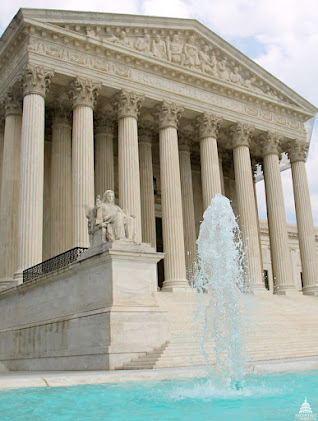Teaching is Leading
Leading is Teaching
President John F. Kennedy was supposed to deliver a lunchtime speech the day he was assassinated in Dallas, Texas on November 22, 1963; in the speech, he wrote that "leading...[is] essential to the leadership's hopes for continued progress and prosperity." Kennedy knew that learning and leadership were connected like no other subject.
What
we fundamentally know has been borne out in research; a professor of management
at Dartmouth College conducted a study to examine specific attributes of
leaders who exhibited outsized abilities and reported the findings in Harvard
Business Review (2018). He notes (as the title states), “The Best Leaders Are
Great Teachers.” These leaders use every opportunity to help grow and develop
their staff through “ongoing, intensive one-on-one tutoring.” The study found
these leaders had qualities that enabled fuller engagement, deeper dialogue,
and the opportunity to gain wisdom, including:
·
Spending
time with line employees engaged in their daily routines, to experience
operations from their perspective;
·
Providing
lessons across three areas—business and technical skills; professionalism,
ethics and personal integrity; and general life wisdom and experience, and;
·
Creating
teachable moments that enabled those participants to remember the experience
(and subsequent lessons) for a long time.
Learning is a Antecedent to Leading
The importance of learning
and teaching in an effective leader cannot be understated. Almost all of the
best bosses I’ve encountered during my nearly 20 years in public service were
able to both teach and learn. Learning is an essential pre-requisite to
teaching, as Hughes, et al (2015) notes (p. 54). If a leader is unwilling to
learn, then how can they impart the wisdom and experience they’ve accumulated,
in a way that the subordinates or followers will actually use, act on, and
incorporate into their leadership journey?
Teaching
is, at its core, the transfer of knowledge, experience, and wisdom to another.
Learning—and being open to learn—is a fundamental requirement that enables
teaching. One must be curious, willing to conduct experiments, collect the
data, reflect on the experience, and move forward with any necessary
adjustments. Thus, learning is foundational, especially in an adaptive
leadership situation (Heifetz, et. al., 2009) The team behind the adaptive
leadership framework describe the importance of “building on the past” (p. 15)
and utilizing multiple data sources to help calibrate and understand the issue
at hand (p. 32), which is all about learning.
In
his HBR article, Finkelstein discusses several examples that support the
“Double-Loop Learning” theory advocated by Chris Argyris (1977). Professor
Argryis’ research and advocacy for a more knowledge-based approach to systems
learning and integration is clearly on display in the leaders that Finkelstein
profiles. At the heart of both Double-Loop Learning and the 2008 study is a
desire to grow, develop, and use knowledge to enhance one’s perspective and
experience before transmitting it to others. Finkelstein also uses words that
denote a more personal type of teaching and learning, less like traditional
classroom training and more like coaching, such as: “offering,” “explaining,”
“mastery,” and “impact.” The lessons given are relevant, long-lasting, and
positive, which reinforces the impact and retention of the student.
The
timing of these lessons were often “organic” or “in the moment,” based on the
needs and circumstances of the student and situation. This underscores the
importance of leaders who have a deep knowledge and strong relationship with
their followers, so as to not only make the teaching personal, but also to know
exactly what the follower needs.
Finkelstein further
describes teaching that incorporated an experiential component. One such
example, from the world-class restaurant Noma, included a ten-day offsite
“pop-up experience” in another city. As we’ve seen from TV shows like Top Chef,
these experiences enable leaders to both stretch themselves, but also
experiment with new roles and responsibilities in a fast-paced team
environment.
The HBR article
also describes the use of probing or challenging questions, a master teaching
technique. This inquiry enables the student to “talk through” an issue. It also
may help spark a dialogue to help the student see various perspectives,
options, or different considerations necessary related to their leadership
development, or a specific topic or situation.
Conclusion
Leaders
must first and foremost be students of the particular organization, industry,
agency, or mission they are a part of. Being able to be “in the weeds” and being
accessible lends credibility to the leader. The leader must also “rise above”
and show a perspective “from the mountaintop”—beyond the current situation or
circumstances—to teach the core lessons necessary for the student to gain a
deeper and broader appreciation of the leadership issues at play. Great leaders
are both students and teachers, and as such, share that knowledge, experience,
and wisdom in a way that engages and transforms others to become leaders as
well.
Argyris, C. (1977,
September). Double Loop Learning in Organizations. Retrieved August 25, 2020,
from https://hbr.org/1977/09/double-loop-learning-in-organizations
Finkelstein, S. (2018,
January). The Best Leaders Are Great Teachers. Retrieved August 25, 2020, from https://hbr.org/2018/01/the-best-leaders-are-great-teachers
Heifetz, R. A., Linsky, M.,
& Grashow, A. (2009). The Practice of Adaptive Leadership Tools and
Tactics for Changing Your Organization and the World. Boston, MA: Harvard
Business Review Press.
Hughes, R. L., Ginnett, R. C., & Curphy, G. J. (2015). Leadership:
Enhancing the lessons of experience
(8th ed.). Boston, MA: McGraw-Hill Irwin.
Kennedy, J.F. (1963). Remarks
Prepared for Delivery at the Trade Mart in Dallas, TX, November 22, 1963
[Undelivered] | JFK Library
Photo: Pixabay. To
Learn Training Books A - Free photo on Pixabay - Pixabay


Comments
Post a Comment